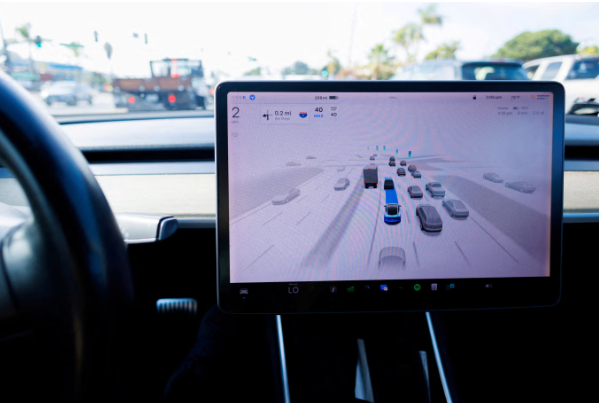
Recently, the US National Highway Traffic Safety Administration (NHTSA) launched a new round of investigations into Tesla's Autopilot technology, accusing its FSD system of "inducing" vehicles to run red lights and cross into oncoming lanes, among other violations. With frequent accidents and growing public concern, the question of whether federal regulators can effectively curb technological risks has become a focus. This article analyzes the potential for regulatory measures, legal authority, and practical challenges.
As the core agency for US federal autonomous driving regulation, NHTSA has the authority to investigate, recall, and set safety standards. Regarding Tesla's FSD violations, NHTSA has launched multiple investigations, covering scenarios such as running red lights, driving the wrong way, and railroad crossing accidents, involving over 2.88 million vehicles. If a design flaw is confirmed in the system, NHTSA can mandate a recall, such as the 2023 recall of 362,000 vehicles due to FSD causing vehicles to "speed through intersections." Furthermore, regulators impose constraints on automakers by setting technical standards (such as the level of autonomous driving requirements) and accident reporting systems. If Tesla refuses to cooperate or its violations are serious, the federal government could take stronger action. Under the Motor Vehicle Safety Act, NHTSA can impose hefty fines on automakers and even suspend the deployment permits for affected models. For example, if the FSD system is found to systematically violate traffic rules and fail to effectively warn the driver, NHTSA could ban its commercial use. Furthermore, federal regulations require autonomous vehicles to undergo rigorous crash testing and safety certification; those that fail to meet these standards cannot enter the market.
The US legal framework for autonomous driving technology is gradually evolving, but it still faces multiple challenges. First, the dual regulatory system of federal and state governments creates a complex web. At the federal level, NHTSA is responsible for setting national safety standards, while state governments control roadway operating permits. For example, the Tesla Cybercab requires an NHTSA exemption due to its lack of a steering wheel, limiting its annual deployment to 2,500 units, and individual states may impose additional hurdles. California, a hub for autonomous driving technology, has passed a law prohibiting the promotion of partially automated features as "full self-driving" and requiring consumers to clearly inform them of their limitations to prevent misleading information.
Second, the pace of technological advancement far outpaces regulatory updates. Tesla's FSD "pure vision" solution emphasizes the absence of lidar, but frequent accidents in conditions like smog and strong sunlight have raised regulatory concerns about its detection capabilities. Laws must constantly adapt to technological evolution, balancing innovation and risk. While new regulations in 2021 strengthen accident reporting requirements, Tesla was investigated for months of data delays in actual implementation, exposing the discrepancy between corporate compliance and regulatory enforcement.
However, regulators face multiple challenges. First, autonomous driving technology evolves rapidly, and existing testing standards struggle to cover all extreme scenarios. For example, FSD's misjudgment in low-visibility conditions exposes the technical limitations of pure vision solutions. Second, regulatory efficiency often lags behind technological development. Although NHTSA has amended its rules to allow vehicles without steering wheels to operate on the road, there remains a lack of unified standards for verifying the reliability of Level 4 autonomous driving. Furthermore, political factors are interfering with regulatory effectiveness. Musk's close relationship with Trump could weaken the Democratic administration's enforcement efforts and hinder the progress of investigations.
Regulatory effectiveness depends not only on legal text but also on practical factors. As an industry giant, Tesla's response strategy influences the regulatory process. Faced with accusations, Tesla often explains delayed reporting by citing "data system issues" and emphasizes that FSD requires driver oversight, thus avoiding responsibility. Furthermore, CEO Musk's political influence cannot be ignored.
Federal regulators have the legal tools to prevent Tesla's Autopilot violations, but enforcement depends on technical validation, overcoming political resistance, and public support. Only through rigorous testing, dynamic regulation, and public trust can we balance innovation and safety and prevent Autopilot technology from becoming an inducement for violations.

Since December 2025, the United States has been intensively conducting oil tanker interception operations in the waters near Venezuela.
Since December 2025, the United States has been intensively…
When U.S. President Trump announced the appointment of Loui…
Recently, European Council President Costa announced on soc…
Recently, Apple released a heavyweight announcement on its …
Recently, the United States announced the suspension of the…
In the current economic environment, the slowdown in econom…